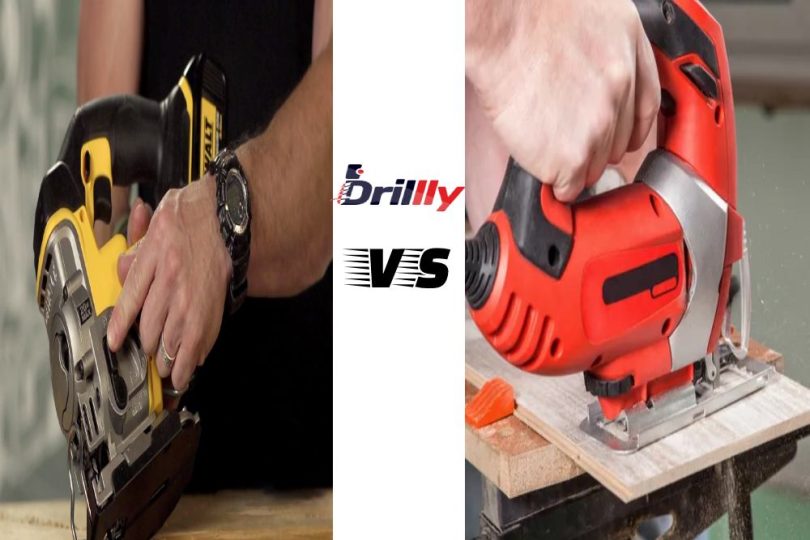Jigsaws are incredibly useful in any workshop. Among all the variations, orbital jigsaws are probably the most famous. There are a couple of subtle differences between a traditional jigsaw and a orbital jigsaw. Now the question is, what are those differences?
Today, I’m answering just that. I’m going to provide an in-depth comparison between the traditional and the orbital jigsaw. The primary difference is that a traditional jigsaw has limited application whereas an orbital one is more versatile. Let’s explore all other differences as well.
Orbital Jigsaw: Pros and Cons
Pros
- Aggressive cutting option
- Generates less friction when you cut materials
- Blade stays sharp and cool at the end of a cut
- Works more time before taking a break
- Pendulum motion helps clean up sawdust and swarf
- Efficient action for different applications
- Less likely to seize or get pinched
- Cuts through thicker and harder material fast
- Cutting life and sharpness are better preserved
- Handles turns tightly and smoothly for circular cuts
- Comes with a built-in dust blower
- The base bevels to both sides so that you know if the angle is correct
- The base drops to let you use the unused blades and save some money
- The hex key for bevel angle adjustment and blade installment stores away close to the battery compartment
Cons
- Coarser and rougher cuts
- Less effective on ceramic or metal
- Impossible to start accurate plunge cuts
- Less effective to cut thin pieces
- Tends to vibrate more
- Radius cuts are only smooth with the zero setting
- Has a hard time blowing dust when there’s a lot of debris
- The usable blade length shortens when you drop the base
Standard Jigsaw: Pros and Cons
Pros
- Fairly affordable price
- Versatile tool and less dangerous than orbital saw for woodwork
- Can find different blades for fine cuts, fast cuts, miter cuts, rip cuts, and more
Cons
- The metal blade isn’t rigid
- Not ideal for fast cuts
- You may often find that the blade was slightly bent to a side during the entire cut. The result is an irregular and inclined cut rather than vertical
- You may notice tiredness in your arms after multiple cuts and/or long cuts
Orbital Jigsaw vs Jigsaw: How They Differ
-
Speed
An cordless orbital jigsaw outperforms a general corded unit with 1100 to 3000 Strokes every minute.
A cordless brushless jigsaw can draw 800 SPM but the speed goes up to 3350 SPM.
-
Power and durability
A brushless unit has less frequent issues with the heat so it lasts longer.
The motor of an orbital jigsaw is less durable and adds more weight to the tool.
-
Working scope
An orbital jigsaw has multiple orbital settings that make the blade cut in an orbital motion.
The wood cuts faster with the higher setting. The feature is helpful when you need to cut lumbers fast where the quality isn’t an issue.
The tool cuts into curves with the orbital setting dialed down but you want to completely turn it off when the job requires exact precision.
A brushless jigsaw has a lock-on trigger and variable speed dial so you won’t have problems with fast cutting or slow starts.
-
Overall size
Both types of jigsaws have convenient sizes but the minimized internal components and the adaptation of latest tech makes the brushless unit more compact.
-
Running period
The working period of a brushless jigsaw is 40 percent longer than the other type when you use a rated battery.
You can work for a longer time between battery swaps and charging sessions.
-
Weight
An orbital jigsaw weighs 4.4 lbs while a brushless variant only weighs 4 lbs.
This makes a brushless unit a better ergonomic option that causes less strain on your hand and feels more comfortable when you hold.
You can use the tool at professional work for a longer time compared to an orbital jigsaw.
-
Price range
You have to spend more than double the price of an orbital jigsaw to get a brushless unit.
The latter option comes with top-notch components that demand a premium price.
The price doesn’t include a battery or charger so your cost for the overall setup goes even higher.
Orbital Jigsaw vs Jigsaw: Are There Any Similarities?
-
Key features
Both types of jigsaws feature illumination so that you have a better vision and work accuracy.
They allow you to attach a standard dust blower to keep the wood or metal surface clean.
Both variants feature a lock-on switch but you must have compatible batteries and chargers to keep them running.
-
Speed dial
Orbital and brushless jigsaws have four-speed dial settings.
The cut gets rougher when the saw strokes at a high speed. Dial down the speed when you need a smoother cut.
-
Base plate angle
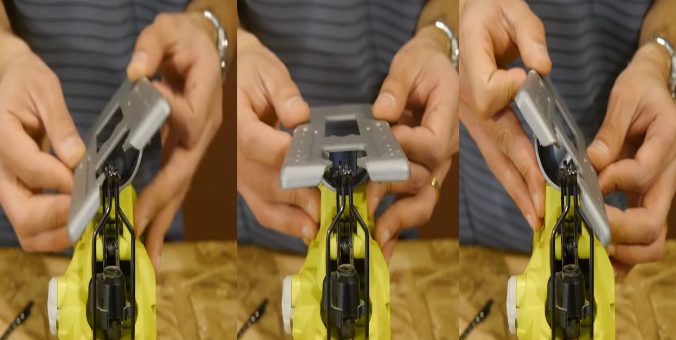
Both variants feature a base plate that rotates 0 to 45 degrees on each side.
The option is helpful when you need to do angled cuts.
-
Stroke length
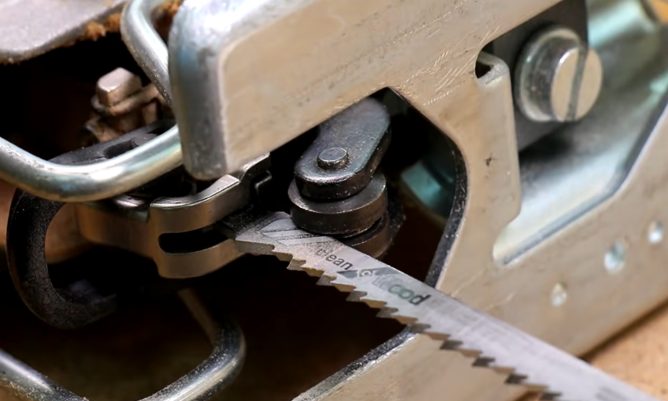
One-inch stroke is common for both jigsaws, which makes them good for work in corners or tight angles.
They are also easily maneuverable.
When should you use an orbital jigsaw?
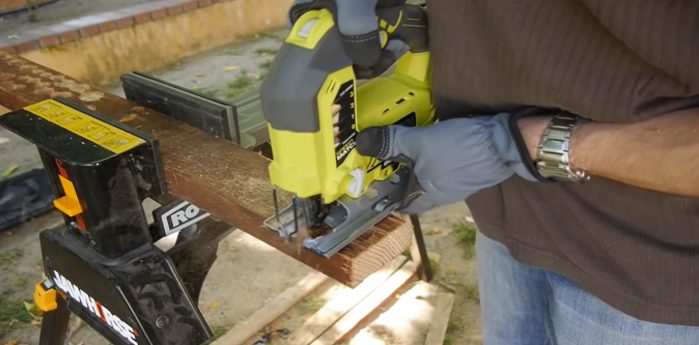
An orbital jigsaw shines when you cut along the grain through a thick piece of softwood.
The tool makes faster cuts through plasterboard, countertops, laminate countertops, and plastic.
Use the jigsaw to quickly cut aluminum, sheers, or plastic with the orbital action switched to a lower setting.
The aggressive cutting style is effective for rough cuts through thick pieces of softwood that you can’t do with a standard jigsaw.
An orbital jigsaw also makes faster work of scroll and straight cuts but you have to keep the orbital setting to zero when you need to work on a plunge cut.
When should you use a standard jigsaw?
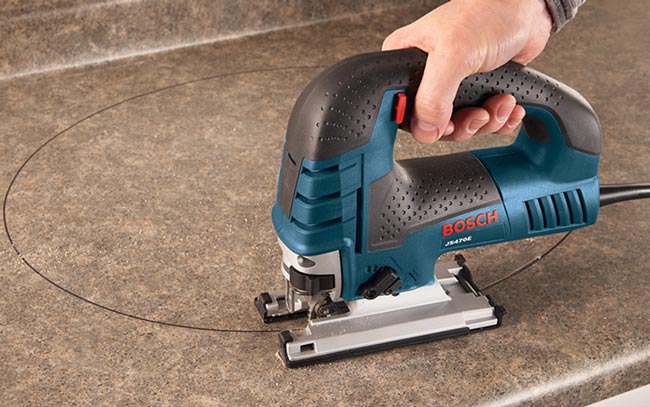
Use a brushless jigsaw with up-down strokes for precision cutting.
The tool is ideal when you need to make complex shapes or cut some curves on the wood.
The jigsaw works well to finish inside corner cuts that you begin with a circular saw. You also want to use the tool to make short crosscuts on boards.
FAQs:
1. Are jigsaw blades universal?
Ans. A specific type of blade is called a U-shank or universal blade but not all of the jigsaw blades are universal. Jigsaws use a few different types of blades that allow them to cut materials.
2. What things to consider when I choose a jigsaw?
Ans. Consider dust blowers, LED illumination, and orbital cutting features when you get a jigsaw. Check if the tool is compatible with the battery system in your stock and consider the budgetary limitation.
3. Can a jigsaw be used as a workhorse saw?
Ans. Jigsaws are small in size and their blades will overheat rapidly when you plan to complete a whole framing job with one of them. You have to hold the saw straight and ensure that the depth is there for an adequate lumber cut.
4. Is a bigger orbit better?
Ans. jigsaws at the highest setting chew through the wood but large orbitals aren’t correct for other materials. The recommended setup is the lowest setting that does the job.

